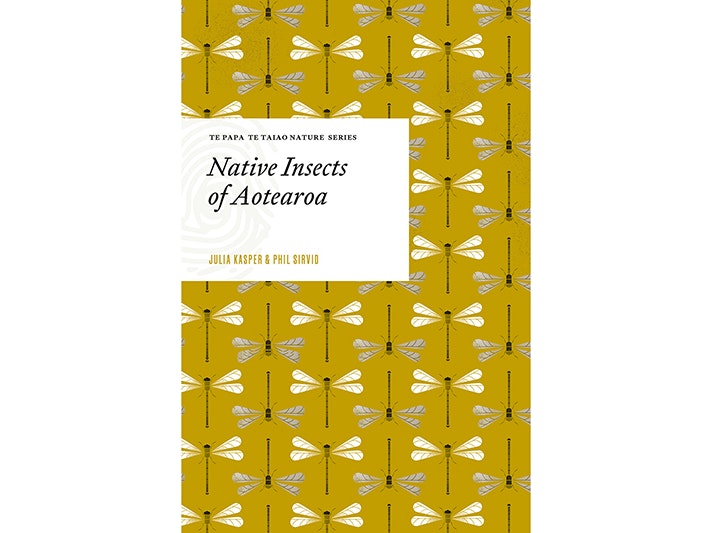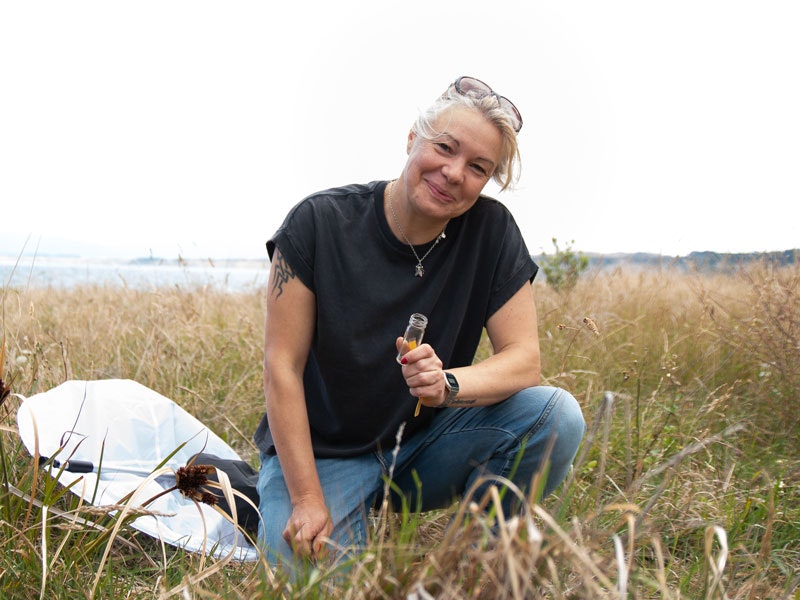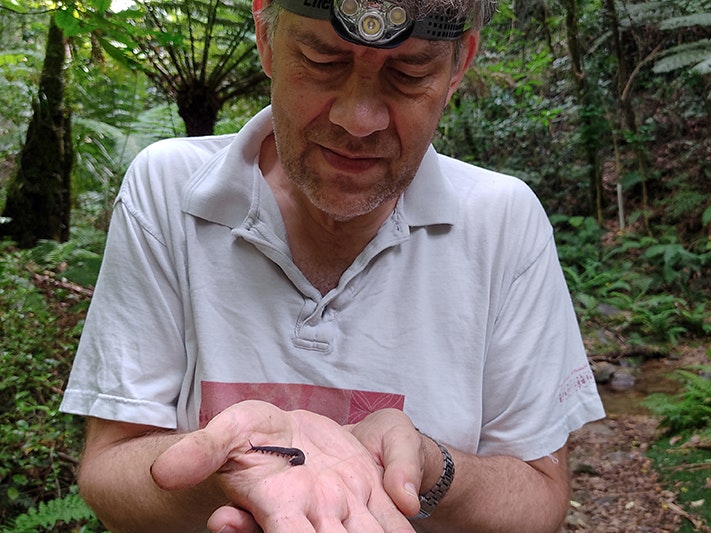
Te Papa Te Taiao Nature Series: Native Insects of Aotearoa
A handy introduction to the unique insects of Aotearoa New Zealand, for the backyard, bach and backpack.
Free museum entry for New Zealanders and people living in New Zealand
Open every day 10am-6pm
(except Christmas Day)
Free museum entry for New Zealanders and people living in New Zealand
Julia Kasper and Phil Sirvid discuss Native Insects of Aotearoa with Te Papa Press.
Julia Kasper is Lead Curator Invertebrates at Te Papa and an entomologist specialised in flies. She studies the taxonomy and distribution of lower Diptera in New Zealand with a strong focus on biosecurity.
Phil Sirvid is Curator Invertebrates in the Natural History Team at Te Papa. Phil has a broad general knowledge of New Zealand entomology but specialises in arachnids, particularly spiders and harvestmen.
Right: Julia Kaspar. Photo by Rachael Hockridge. Te Papa; left: Phil Sirvid. Photo courtesy of Auckland Zoo
PS: Absolutely! They are a vital part of the ecosystem. They’re food for other animals, pollinators, nutrient recyclers and more. Most of our insect species are also as unique to Aotearoa as kiwi and tuatara, which makes them every bit as special as our bigger and better-known wildlife.
JK: Definitely! Insects make up to 90 per cent of all species of animals on the planet. Our entire ecosystem depends on them. And they are increasingly threatened by climate change, disappearing habitat, widespread pesticides and light pollution. It’s in our own interests to protect them. In order to do that, we need to know them first. Every New Zealander should know about New Zealand’s unique insect species.
JK: General purpose insect sprays should be banned from all households! Those cans are often the first thing I see entering a holiday bach. For every house fly, which might annoy you, you risk killing rare and unique insects too.
Only specific treatments should be used, and only if you have an infestation of a pest species.
PS and JK: It wasn’t always easy. It was a combination of trying to get broad coverage across as many insect orders as we could but sometimes, we were constrained by the availability of suitable images from our chosen illustrators. We also wanted a mix of the familiar and not-so-familiar insects. We hope we’ve managed to strike a balance between all three criteria.
PS: The North Island lichen moth. It’s just a wonderful deceiver. The moth is a handsome looking insect, and it’s unusual in that it has asymmetric wing patterns. This helps it hide against a lichen background. Their caterpillars also get in on the act, and, with a combination of colouring and body positioning, can disguise themselves as bird poop or small twigs.
JK: The glow-worm. What can be better than a ‘maggot’ with a glowing bum. It is so magic.
PS: They’re all useful and important in their own way!
JK: Useful to whom? Nature isn’t about a purpose, its about balance. And all insect species have their place to keep up that balance.
PS: There are plenty of contenders, but I’ll nominate the giraffe weevil. In insects, females are often larger than males, but here the reverse is usually true. Males and females also have different snout shapes: long and sturdy with the antennae near the tip in males, and shorter and finer with antennae further back. Males use their snouts for fighting each other for the right to mate, while females use theirs to make holes for their eggs. There are also ‘sneaker males’ that try to mate with females while the larger males are fighting.
JK: A fly with no wings could be seen as weird, so I would say the bat fly is our weirdest insect. But actually not because of the lack of wings, but more for how they seem to split their tasks and workload, almost as in a beehive. Their scurrile adaptation living with the bats is fascinating. And then there are still so many unknown aspects of their unusual fly behaviour.
PS: Rangatira/South East Island. This is a predator-free sanctuary island in the Chathams and home to thousands of sea birds and some of our rarest birds like the black robin. At night, the leaf litter seems to come alive with insects, while impressively large spiders wander along the tree trunks. It felt like a truly wild place teeming with life even though it had once been farmed.
JK: Rapa Nui/Easter Island! It was great to experience the vibe in another part of the Polynesian Triangle. And there were pretty cool dung beetles.
PS and JK: Most of the illustrations were made by two artists, Des Helmore and George Vernon Hudson. Helmore was an illustrator for what was the DSIR Entomology Division, which later became the New Zealand Arthropod Collection, part of the Manaaki Whenua Landcare Research Crown Institute. Hudson was an amateur entomologist who did most of his work the early 20th century. He wrote and illustrated several books, and his collection and original illustrations are held at Te Papa. We also have one illustration by Ricardo Palma, a former Te Papa curator of Entomology.
PS: I hadn’t realised just how tricky it sometimes is for an adult giraffe weevil to free itself from the chamber it pupates in. The combination of a long snout and mouthparts that are much narrower than the shoulders really don’t make it easy!
JK: I learned about the evolution of fleas in New Zealand and why most of our fleas use seabirds as hosts. Only one group of fleas can be found on parrots but not on kiwis.
PS: I hope readers will gain an appreciation for how unique and special many seemingly common (and not so common) insects are.
JK: I hope this book will raise awareness of insects; that readers will use it to be amazed but also to identify insects or to make sense of things they have experienced in the insect realm. Also, it might spark more interest, and people may want more in-depth literature about insects.

A handy introduction to the unique insects of Aotearoa New Zealand, for the backyard, bach and backpack.

